SQL Server enables it, because the JOIN syntax is the following (from MSDN):
<joined_table> ::=
{
<table_source> <join_type> <table_source> ON <search_condition>
| <table_source> CROSS JOIN <table_source>
| left_table_source { CROSS | OUTER } APPLY right_table_source
| [ ( ] <joined_table> [ ) ]
}
<join_type> ::=
[ { INNER | { { LEFT | RIGHT | FULL } [ OUTER ] } } [ <join_hint> ] ]
JOIN
Where the <search_condition> is the following:
Specifies the condition on which the join is based. The condition can specify any predicate, although columns and comparison operators are
frequently used.
When the condition specifies columns, the columns do not have to have the same name or same data type; however, if the data types are not
the same, they must be either compatible or types that SQL Server can
implicitly convert. If the data types cannot be implicitly converted,
the condition must explicitly convert the data type by using the
CONVERT function.
There can be predicates that involve only one of the joined tables in the ON clause. Such predicates also can be in the WHERE clause in
the query. Although the placement of such predicates does not make a
difference for INNER joins, they might cause a different result when
OUTER joins are involved. This is because the predicates in the ON
clause are applied to the table before the join, whereas the WHERE
clause is semantically applied to the result of the join.
For more information about search conditions and predicates, see Search Condition (Transact-SQL).
The important part is highlighted with bold.
Here is an example:
SELECT
U.UserName, P.PrivilegeName, P.Status
FROM
dbo.Users U
LEFT JOIN dbo.Privileges P
ON U.UserID = P.UserID AND P.PrivilegeName = 'EditComment'
This query lists all users and adds the status of the 'EditComment' privilege. If you move the condition to the WHERE clause, the result is different. (Only users with the 'EditComment' privilege will be listed.)
The above query will list all users with NULL in the Status and PrivilegeName columns in the result if there is no matching row.
The same result could be achived with a subquery:
SELECT
U.UserName, P.PrivilegeName, P.Status
FROM
dbo.Users U
LEFT JOIN (SELECT UserID, Status FROM dbo.Privileges WHERE P.PrivilegeName = 'EditComment') P
ON U.UserID = P.UserID
So this is some kind of shortand of the subquery approach.
Moving the condition to the WHERE clause
SELECT
U.UserName, P.PrivilegeName, P.Status
FROM
dbo.Users U
LEFT JOIN dbo.Privileges P
ON U.UserID = P.UserID
WHERE
P.PrivilegeName = 'EditComment'
If the condition is in the WHERE clause, the result will be filtered to that rows which has a mathing row in the Privileges table and that row's PrivilegeName is EditComment. This is basically an INNER JOIN. (Filtering to a column in the WHERE clause which is in a LEFT JOINed table filters all NULL values from the result - except if there is an OR condition with IS NULL)
Execution Plans
The difference in the execution plans are because of the logical processing of the SELECT queries.
FROM, ON, JOIN, WHERE, GROUP BY, WITH CUBE or WITH ROLLUP, HAVING, SELECT, DISTINCT, ORDER BY, TOP
JOIN is processed before WHERE.
Change the INNER JOIN in your query to LEFT or any OUTER join and analyze the query. The results could be different.
EDIT
The second query looks like a filtered cross-join:
/* 4: */ SELECT x.* FROM x INNER JOIN y ON 1=1;
/* 5: */ SELECT x.* FROM x CROSS JOIN y
When you change the ON condition in the 4th query to your original one in the 2nd query, that equals to
/* 6: */ SELECT x.* FROM x CROSS JOIN y WHERE x.YId = @YId
Why does SQL Server even accept this seemingly nonsensical join condition as valid?
Because it is valid (it has a different meaning, but syntactically it is valid)
Are there any specific reasons or situations that explain why the ON condition is not required to refer to the joined table?
Reason? yes, it is syntactically valid
Situation: CROSS JOIN with filtering for example. Join 1 row from a table to all records in the resultset (e.g. the record of the current date from a point-in-time/date/calendar table for reporting purposes)
